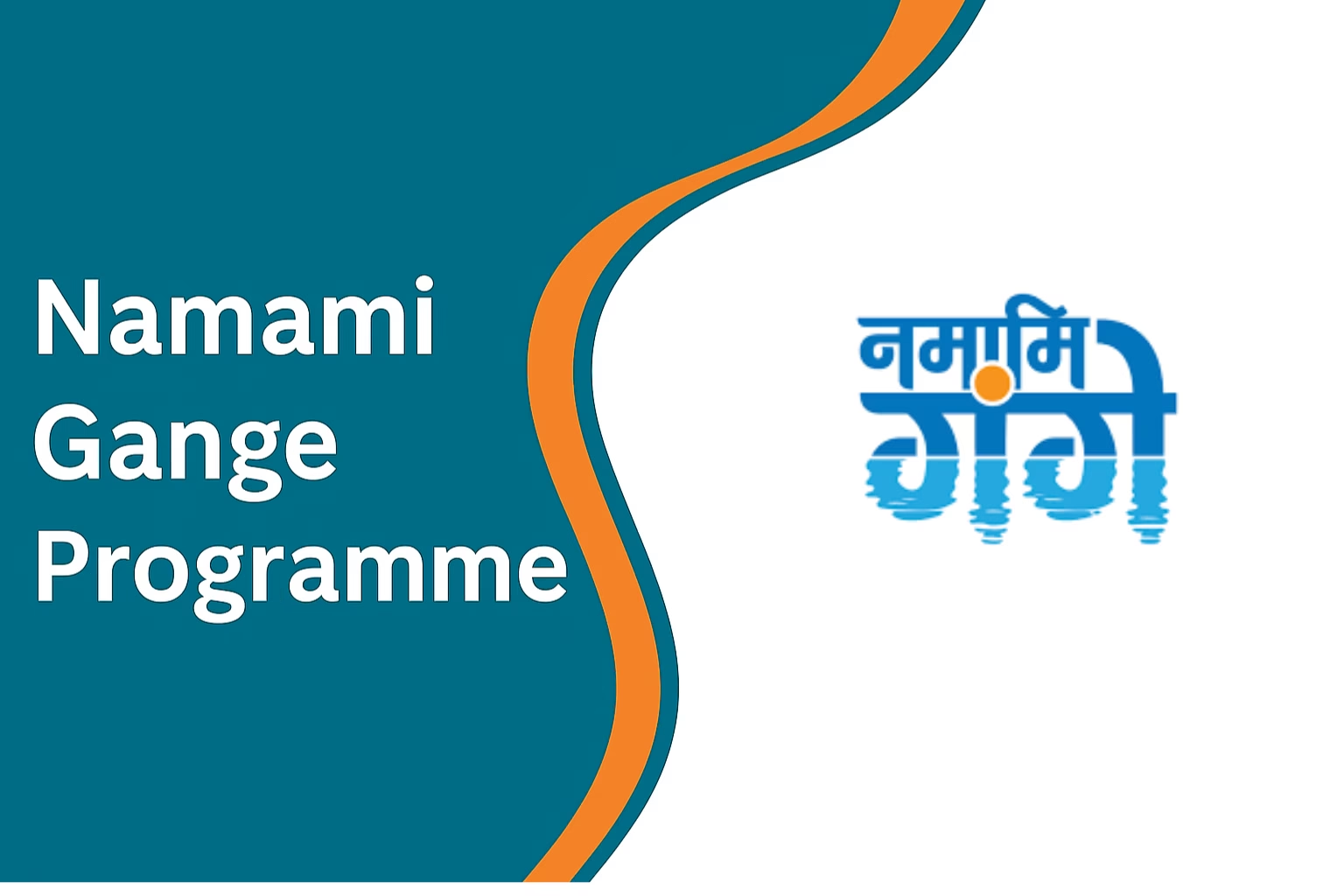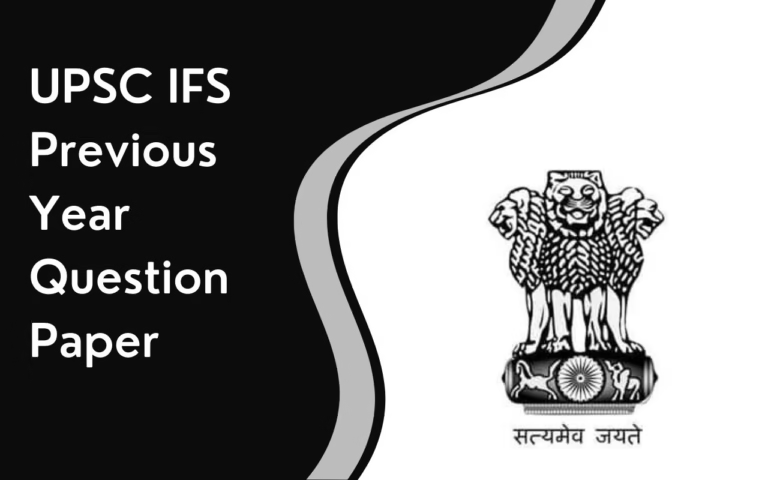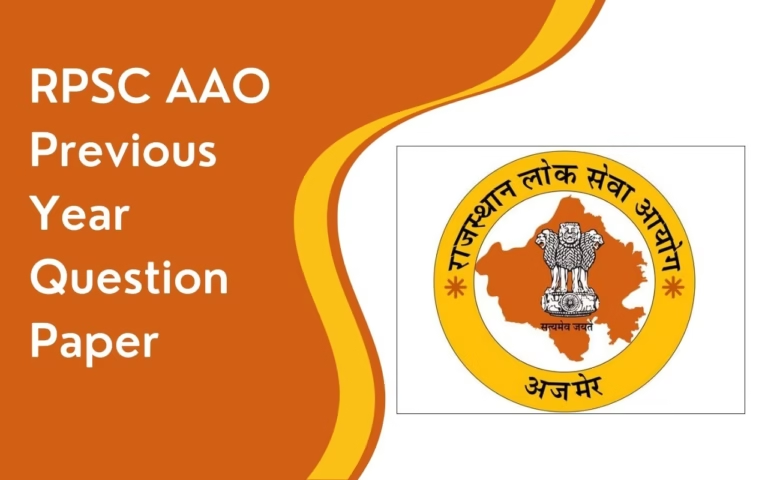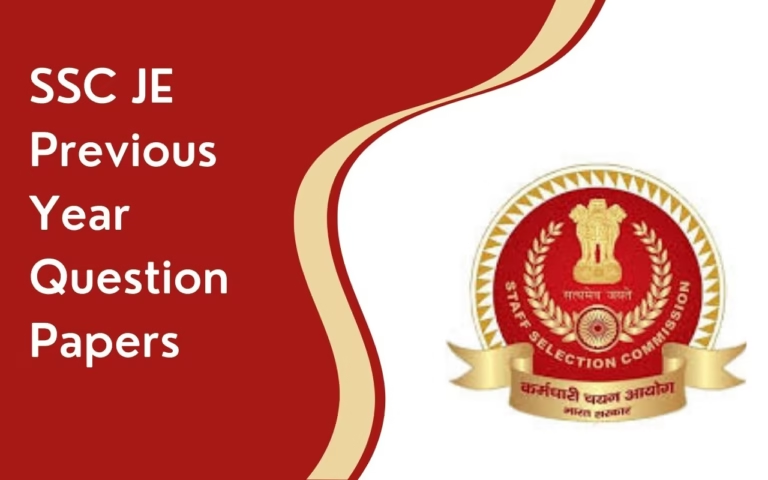Namami Gange is a flagship mission started by the Indian government in June 2014. It aims to clean and revive the Ganga and its tributaries. It focuses on reducing pollution, protecting biodiversity, and bringing the river back to life through a well-planned, integrated approach.
Overview of Namami Gange Programme
The Government of India launched the Namami Gange Programme in June 2014 as its flagship mission to clean and rejuvenate the Ganga River and its tributaries. This programme takes an integrated approach to reduce pollution, restore biodiversity, and revive the river ecosystem.
The Ministry of Jal Shakti oversees the programme, while the National Mission for Clean Ganga (NMCG) and State Programme Management Groups (SPMGs) implement it on the ground. Authorities carry out the work in phases, starting with immediate cleanup actions, followed by medium- and long-term solutions like sewage treatment, riverfront development, and ecological restoration.
Namami Gange actively operates in eight major states where the Ganga flows, Uttarakhand, Uttar Pradesh, Bihar, Jharkhand, West Bengal, Haryana, Rajasthan, and Delhi. The programme covers more than 97 towns and 4,400 villages. These include key urban centres like Haridwar, Kanpur, Prayagraj, Varanasi, Patna, and Kolkata.
Besides the Ganga, the mission also targets major tributaries such as the Yamuna, Gomti, Damodar, and Ramganga, and works to revive smaller rivers and wetlands within the basin. A three-tier governance model enables national, state, and district-level coordination to ensure efficient implementation.
With a budget of around ₹22,500 crore, the government has extended the programme through March 2026, aiming to create long-term impact on river health, public sanitation, and sustainable water management.
Objectives of Namami Gange Programme
The Namami Gange Programme aims to clean, conserve, and rejuvenate the Ganga River and its basin through a multi-dimensional approach. It tackles pollution, protects biodiversity, and improves the lives of communities that depend on the river.
Here’s what the programme sets out to achieve:
- Clean and protect the Ganga River: The main goal is to reduce pollution in the Ganga and its tributaries by intercepting, diverting, and treating sewage and waste from cities, towns, and villages along its banks.
- Improve water quality: The programme promotes the use of sewage treatment plants, bio-remediation techniques, and river surface cleaning methods to restore water quality.
- Revive river ecosystems: It works to restore the natural flow of the river and protect species like the Gangetic dolphin, turtles, and native fish through afforestation, biodiversity parks, and wetland conservation.
- Manage runoff and pollution in the basin: By improving watershed management, the programme helps reduce surface runoff, control soil erosion, and keep pollutants from reaching the river.
- Transform riverside villages: Through the Ganga Gram Project, it supports sanitation, solid waste management, and hygiene awareness in all villages along the river, aiming for 100% open defecation-free status.
- Modernize ghats and public spaces: It upgrades riverfronts and crematoria to reduce waste and make access to the river more hygienic and respectful for both locals and pilgrims.
- Promote sustainable agriculture and livelihoods: The mission encourages eco-friendly farming and helps riverside communities find new income sources that don’t harm the environment.
- Build cultural and tourism hubs: The programme also aims to develop historical, religious, and tourist towns along the Ganga, preserving their heritage while promoting clean practices.
- Engage communities and raise awareness: Local people, schools, NGOs, and faith groups play a central role through clean-up drives, campaigns, and educational efforts.
- Strengthen monitoring and governance: Real-time water quality monitoring systems, research, and better policy frameworks support long-term impact and accountability.
By focusing on these clear objectives, this programme works toward restoring the Ganga’s natural glory. Thus, making it cleaner, healthier, and more sustainable for future generations.
Key Pillars of the Namami Gange Programme
The Namami Gange Programme works through several key pillars. Each pillar focuses on a specific area of intervention, helping restore the river’s health and support the communities that depend on it.
Here are the main pillars of the programme:
1. Pollution Control Measures
To reduce pollution entering the Ganga, the programme focuses on:
- Sewage Treatment: Building and upgrading sewage treatment plants to stop untreated wastewater from flowing into the river.
- Industrial Waste Monitoring: Enforcing strict standards to ensure industries treat their effluents before discharge.
- River Surface Cleaning: Regular removal of floating waste and debris to keep the water surface clean.
2. Ecological Restoration
To revive the river’s natural ecosystem:
- Biodiversity Conservation: Protecting aquatic life like the Gangetic dolphin and restoring native flora and fauna.
- Afforestation: Planting trees along the riverbanks to prevent soil erosion, retain water, and support wildlife habitats.
3. Community Engagement and Awareness
Recognizing that long-term success depends on people’s involvement, the programme includes:
- Public Awareness Campaigns: Educating citizens and encouraging active participation in river conservation.
- Ganga Gram Initiative: Transforming villages along the Ganga into clean, sustainable models with proper sanitation and waste management.
4. Riverfront Development
Improving access and cleanliness along the river through:
- Renovating ghats and cremation grounds to support hygiene, safety, and cultural practices without harming the environment.
This integrated approach ensures the programme doesn’t just clean the Ganga, but also works toward sustaining its ecological, cultural, and spiritual value for generations to come.
Achievements of Namami Gange Programme
The Namami Gange Programme has made strong progress in cleaning and restoring the Ganga River. Here’s a quick look at what has been achieved so far:
1. Better Sewage Infrastructure
Out of 206 sewage projects, 127 are completed, adding 3,446 MLD to sewage treatment capacity. 152 treatment plants are now working, reducing wastewater discharge into the river.
2. Improved Water Quality
States like Uttar Pradesh, Bihar, and West Bengal have seen cleaner stretches of the Ganga. In UP, BOD levels dropped from 10–20 mg/l (2015) to 3–6 mg/l (2022), showing clear improvement.
3. Biodiversity Boost
With 56 biodiversity and plantation projects, the Ganga has seen a rise in species like the Gangetic dolphin, from 3,330 in 2018 to around 3,936 in 2024. Conservation centres and rescue programmes are active along the river.
4. Cleaner Ghats and River Surface
182 ghats and 118 crematoria have been cleaned or upgraded. River surface cleaning is ongoing at 11 key sites, removing floating waste and improving the river’s appearance.
5. More Green Cover
Large-scale plantation drives are restoring forests along the river in Uttarakhand, UP, Bihar, Jharkhand, and West Bengal, reducing erosion and supporting the ecosystem.
6. Public Engagement
Mass awareness campaigns, clean-up drives, and school outreach programmes have helped bring people into the mission. The Ganga theme song and active social media presence added to the visibility.
7. Industrial Waste Control
Over 1,000 polluting industries were monitored; 885 are now linked to online effluent monitoring. Regular checks have reduced industrial pollution.
8. Model Ganga Villages
65 model Ganga villages are being developed with a focus on sanitation and eco-friendly living. Also, more than 8.5 lakh toilets have been built in 1674 villages
9. Global Recognition
Namami Gange is now a UN Flagship Restoration Project. It has received international awards for innovation in water and river conservation.
Also Read: Swachh Bharat Mission
In which year Namami Gange programme launched?
The Namami Gange Programme was launched in 2014 by the Government of India.
Who started Namami Gange?
It was initiated by Prime Minister Narendra Modi as a flagship mission under the Ministry of Jal Shakti to clean and rejuvenate the Ganga River.
How successful is Namami Gange?
The programme has shown notable progress with improved sewage infrastructure, reduced pollution levels in many stretches of the Ganga, increased biodiversity sightings, and active community participation. However, continuous efforts are needed for long-term impact.
Which states are covered under the Namami Gange Programme?
The programme mainly covers eight states through which the Ganga flows: Uttarakhand, Uttar Pradesh, Bihar, Jharkhand, West Bengal, Haryana, Rajasthan, and Delhi. Some initiatives also extend to other parts of the Ganga basin.
What are the key components of the Namami Gange Programme?
Its main focus areas include sewage treatment, river surface cleaning, biodiversity conservation, afforestation, industrial waste management, public awareness, and developing Ganga Gram model villages.




